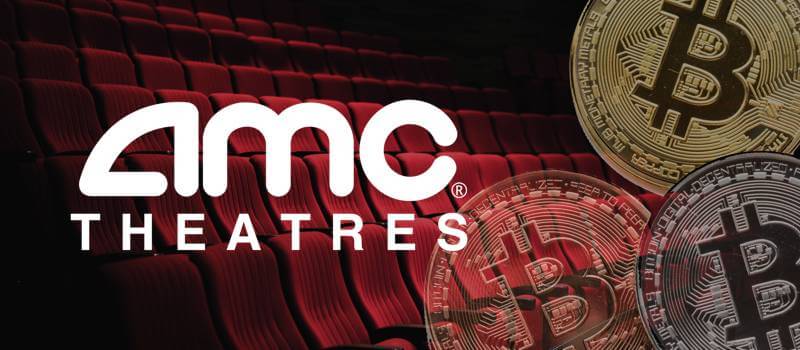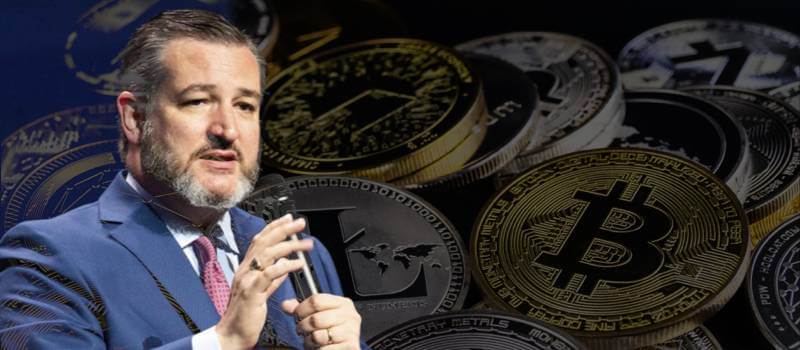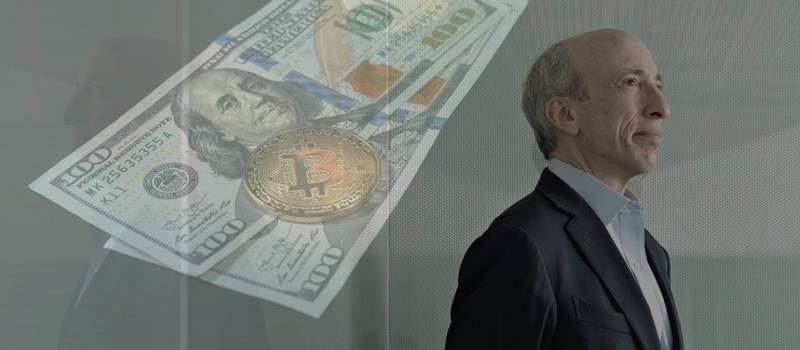Venture Capitalists bring legitimacy to crypto, DeFi, and NFTs
During the summer of 2016, the value of all crypto throughout the world was not quite $10 billion. Since then, that number has increased substantially. Today, anyone can buy crypto with the Robinhood app, S&P 500 companies have placed bitcoin on their balance sheets, and the overall value of the crypto market remains at more than $1.5 trillion. Still, BlackRock CEO Larry Fink recently asserted there was “very little demand” for cryptocurrencies. “In the past, you’ve asked me about crypto and bitcoin. Again, in my last two weeks of business travel, not one question has been asked about that,” Fink said. Yet, the raw data tells a different story. Venture capital funds have invested $17 billion into cryptocurrency companies this year―the most in any single year, and equal to the amount raised in all previous years combined. Peter Thiel, Alan Howard, and Louis Bacon invested $10 billion of digital assets and cash into Bullish Global, a new crypto exchange. The company then raised $300 million in additional funding, and this investment alone would have made 2021 the biggest year for venture capital investment into cryptocurrency. Beyond the new exchange, the remaining $7.2 billion is already on par with the previous record of $7.4 billion set in 2018. Companies have not bought bitcoin for their balance sheets in Q2 like they had in Q1 2021. Venture capital funds, however, are pouring in a lot of money. Blockchain companies were involved in deals which outpaced all of 2020 in just the first half of this year. Venture Capitalists (VCs) have increased from 0.89% to 5.97% from H2 2020 to H1 2021. Clearly, while token sales and ICOs have received a lot of attention when it comes to crypto fundraising, venture capitalists have become very active in the space, as well. Startups today have the clear option of raising money from a crypto-focused VC fund.
When a project raises funds privately with VCs, they don’t have to deal with the pressures of a token-holding community, and this can prove to be quite rewarding in and of itself. Crypto and blockchain technology communities are supposed to have decision-making power, and this changes the way in which projects are brought to market. Since the project is beholden to this community to deliver a successful project, it gets support in the open market. And so, this allows the project itself to instead focus on product development, instead of marketing. As well, this process alleviates the risk that someone is going to dump a huge number of coins and the project will lose overall value. Instead, a project can take on VC funds, focus on their product, and then later raise funds from the public, which can serve as a token distribution mechanism, as well.
The global crowdfunding market is worth $14 billion, and it is expected to triple by 2026. Blockchain has played a big role in this growth, and it is apparent that blockchain and crowdfunding have been a winning formula (EOS and Ethereum each raised more than $4 billion and $18 million respectively through token sales). Token sales make it possible to invest small amounts before crowdfunding, and this process levels the playing field for non-accredited versus accredited investors. In this way, crowdfunding democratizes investing and fundraising. This becomes even more apparent when the crowdfunding is done based on a decentralized formula, and one of the best-known examples of crowdfunding and blockchain is ICOs (initial coin offerings). Whereas traditional fundraising has historically presented too many hurdles since it usually takes one of three forms: self-funding, bank funding, or venture capital: most people don’t have enough money to self-fund, banks require existing businesses with good revenues and cash flow, and venture fund capital often require crossover appeal, new businesses struggle to fundraise through traditional methods, inhibiting growth.
The community has matured since the days of Wild West ICOs, and nowadays, most people want to invest or participate in crypto projects with a promise beyond quick money. Today, many projects first bring VCs on board before doing a public sale, because VCs lend the project credibility. Established investors will have already done due diligence on the value and quality of the project. And so… the only thing we know about the metaverse is that looking into its future, it will surprise many of us. Soon, it is likely that it will combine social media, virtual reality, as well as blockchain and cryptocurrency technologies. Already, celebrities such as Katy Perry and Gary Vaynerhuk have created their own NFTs. Though surprising right now, I expect we will see much more of that in the future.
US senator says proposed crypto laws are a ‘huge mistake’
United States Senator Mike Lee of Utah has raised concerns that the crypto tax provision in the $1.2 trillion infrastructure bill will send more citizens below the poverty benchmark line.
Warning that passing the legislation, which he feels is unproven, would stifle innovation in the country, while noting that cryptocurrencies, generally, are not regulated like securities. In one of the earliest oppositions to the move to adopt the provision, Lee stated that the regulation of crypto would drive away innovation since cryptos do not operate under policies by the government. He outlined his numerous concerns during the Senate session last Saturday. Even though Lee admitted that crypto is “an industry that’s rapidly developing within the United States,” he stated that the provision in the infrastructure bill would require those who buy and sell cryptocurrency to treat it the same way as they would securities, and that this itself would be problematic because cryptocurrencies are very different than securities. “These aren’t just stocks. It’s something very different. It’s a medium of exchange that, if adopted more widely, could facilitate a lot of economic activities and a lot of innovation within the United States of America,” Lee argued.
He then warned that if the bill gets passed, it’s going to have a chilling effect on innovation within this sector, mostly because other countries will be the ones to reap the benefits of crypto, so long as their own laws pertaining to crypto make more sense. “If what you’re going to do is take away that value by requiring that all of it be registered and publicly disclosed by giving the federal government the ability to peer into it, you’re going to stifle innovation, you’re going to make a lot of people upset, and you’re going to make Americans poorer,” he added.

‘Whale’ indicator that preceded 2020’s Bitcoin (BTC) crash is now back
Bitcoin proponents and investors are calling for a new ‘supercycle,’ and predictions about where the world’s largest cryptocurrency by market cap will go, reach as high as $1 million in certain circles. However, this outlook might be spoiled if one considers a certain technical indicator – the “$BTC Exchange Whale Ratio (72h MA) has reached 90%,” warned the founder of the crypto analytics tools CryptoQuant, Ki-Young Ju. In a tweet at the start of last week, Ju stated, “It’s highest since Feb 2020, before the mass-dumping. Don’t take too much leverage on your longs. Be careful.” So, just what is this whale dumping tool? CryptoQuant states that ‘Whale Dumping’ is a measure of deposits from some of the largest holders of Bitcoin, who are known as ‘whales’ in financial circles. Although these whales are usually secretive about their trades and their identity is often unknown, tracking whale wallets helps provide information on what large holders of Bitcoin and other cryptocurrencies are doing.
Many times, their trades could impact the market. Two indicators are used by CryptoQuant to check how whales dump their coins. The first is an ‘All Exchanges Inflow Mean (24h MA)’ tool that calculates the average amount of Bitcoin deposits to all crypto exchanges. The second is an Exchange Whale Ratio tool, which calculates the top 10 inflow transactions to total inflows. The latter indicator is said to flash a ratio above 85% when prices shoot upwards in a ‘fakeout’ which sometimes precede a dump. The CryptoQuant blog notes, “In the bull market, it often keeps below 85%. On the other hand, in the bear market or fake bull for a mass-dumping, it usually keeps above 85%.” Where’s Bitcoin on that chart now? Bitcoin’s ‘Exchange Whale Ratio’ was at a 0.90 level early last week, signifying conditions might be ripe for a ‘mass dumping.’ Bitcoin saw sudden drops on several instances the last time these levels were reached. In March 2020, for instance, when BTC fell to below $4,000 for several hours, the tool reached a high of 0.90. The tool stayed above 0.85 in November 2018, when Bitcoin fell from above $6,000 to under $3,900. Bitcoin trades above $45,000 for now and is up nearly 15% in the past few days alone. However, seeing resistance at the $46,000 level, could the Whale Dumping tool, once again, prove to be correct? We shall see…

American cinema giant AMC is now accepting Bitcoin (BTC)
In what is one of the latest in a series of events indicating the acceptance of crypto as a valid means of exchange globally, the largest American cinema operator, AMC, has announced that it will begin the acceptance of Bitcoin for payments for movie tickets by 2022. This announcement was made by the cinema’s chairman and CEO, Adam Aron, who was speaking during a conference call regarding the firm’s second-quarter results, which were announced on August 9.
Aron emphasized that the demand for the acceptance of crypto for the purchase of movie tickets from the cinema’s customers is very high, and according to him, the cinema chain intends to ensure the necessary infrastructure required for the acceptance of Bitcoin for payments for online movie tickets are in place before the end of this year. Thus, it can commence its acceptance next year. In the firm’s Q2 performance, released earlier in the day before Aron’s call, the group showed massive improvements compared to last year’s results. AMCs Q2 impressed most investors, as the results come just one year after the firm appeared destined for bankruptcy, since the cinema operator was forced to close venues as the global coronavirus pandemic spread. AMC reported a total of $444 million in revenue compared to Q2 of 2020 when it recorded just $18.9 million in revenue. The firm’s net losses declined from $561 million or $5.38 per share to $349 million or $0.71 per share year-over-year. Aside from the adoption of BTC payments, which were featured prominently in the CEO’s announcement, Aron also revealed that the firm plans to open in over twelve new locations across the United States, Europe, and the Middle East before the end of 2021.

Ted Cruz says crypto got ‘screwed’ after senate votes on infrastructure bill
US Democrats have objected to moves which would make further amendments to the crypto tax provision in the infrastructure bill, in an occurrence whose effects are yet to be fully determined.
Senator Ted Cruz, who represents Texas in the United States Senate, revealed in a tweet on Monday of last week, “Crypto got screwed tonight,” noting that the disagreement over the issue of spending took a partisan dimension, with Democrats voting against its change. “That means NO vote on Wyden-Lummis to lessen the damage this bill will do to crypto, NO vote on the Cruz amendment to repeal the new crypto rules altogether,” he wrote. He then argued that the effect of the Senate’s action would be to inflict billions of dollars of damage on the growing crypto industry and would drive much of its business overseas. “There aren’t five Senators who understand much of anything about crypto,” the Texas Senator claimed before signifying that this action was reckless and harmful. “What the Senate said tonight: Let’s tax the hell out of something we know nothing about, so we can pass a giant bill we haven’t read, and spend the American people’s money on stuff we can’t afford,” he added.
In one of the earliest oppositions to the move to adopt the provision of a crypto tax in the $1.2 trillion infrastructure bill, United States Senator Mike Lee had earlier raised concerns that the move would send more citizens below the poverty benchmark line. While warning that passing the legislation, which he described as being unproven, would stifle innovation in the country, he noted that cryptocurrencies are generally not regulated like securities. Regulating crypto would drive away innovation, since they do not operate under policies by the government, he explained. Lee, a lawmaker from Utah, outlined his numerous concerns about crypto during the Senate session last Saturday.

SEC head Gary Gensler warns of ‘even more’ crypto regulation
Determined to tighten the leash on crypto, Senator Elizabeth Warren wrote to the SEC Chairman last month requesting concrete input on what authorization the agency needed to regulate cryptocurrency exchanges. Senator Warren recently released his response. Securities and Exchange Commission (SEC) Chair Gary Gensler sent this letter addressing the “opaque and volatile” crypto market and influenced a resolution as far as whether the U.S. Congress should intervene. “I believe we need additional authorities to prevent transactions, products, and platforms from falling between regulatory cracks,” wrote Gensler, adding that “the legislative priority should center on crypto trading, lending, and DeFi platforms. While each token’s legal status depends on its own facts and circumstances, the probability is quite remote that, with 50 or 100 tokens, any given platform has zero securities.” In adding that part, he affirmed that the question of securities’ status is clear. “Certain rules related to crypto assets are well-settled. The test to determine whether a crypto asset is a security is clear,” asserted Gensler, while pointing out regulators will “need more resources to protect investors in this growing and volatile sector.” As if that was not clear enough, Gensler went on … “Further, while many overseas platforms state they don’t allow U.S. investors, there are allegations that some unregulated foreign exchanges facilitate trading by U.S. traders who are using virtual private networks, or VPNs.” He then questioned whether US crypto traders are easily evading overseas exchange bans.
And on, and on … Gensler also took the opportunity to draw the Senator’s attention to the booming stablecoin market worth $113 billion, pointing out their primary role in crypto trading and lending. “To trade crypto-to-crypto, usually, somebody uses stablecoins,” He explained (fascinating that he understood this well enough), while further elaborating that “in July, nearly three-quarters of trading on all crypto trading platforms occurred between a stablecoin and some other token.” According to the regulator, the use of stablecoins “may facilitate those seeking to sidestep a host of public policy goals connected to the traditional banking and financial system: anti-money laundering, tax compliance, sanctions, and the like.” Sounds like something done frequently with most other assets that engender a whole host of regulations anyway! So why the prejudice against crypto?
The consequences of Bitcoin (BTC) issuance at zero are sooner than you think

There will only ever be twenty-one million Bitcoin in existence, and so what happens when all the Bitcoin has been mined? This topic is a hotly contested within the cryptocurrency community and has no clear answer. What is known for sure is that miners who secure the network, will have less incentive to stick around. According to Justin Drake, a researcher at the Ethereum Foundation, the ramifications of this fact means that significant changes will be coming to the Bitcoin protocol, and many believe this will occur sooner than most investors think. Since the current circulating supply of Bitcoin is around 18.8 million BTC, this would account for almost ninety percent of all the tokens that will ever exist. At the current rate, a 6.25 BTC block reward is issued every ten minutes. This equates to 900 new BTC entering circulation each day. Because this rate halves every four years, it won’t be until 2140 that all 21 million tokens will have been mined and its issuance becomes zero. Since all of us reading this article currently would have passed away before then, many consider this a low-priority issue – something for the next generation to deal with. However, Drake reasons that the effects of close to zero Bitcoin issuance are just as pertinent, and that this scenario will happen within the next 20-30 years.
“So very, very quickly, you realize that Bitcoin will be a very unstable system. And it won’t happen a hundred years into the future when the issuance is zero. It will actually happen 20 to 30 years into the future,” Drake recently expounded. In eight halvings time (the year 2052), the issuance rate will be 3.5 BTC per year, which will yield just 0.0243 BTC for each block reward. Drake added that this is likely insufficient to secure the Bitcoin blockchain. To counter this, he gave a number of suggestions, starting with the obvious one of increasing the 21-million-limit. That way, miners would have more incentive to stick around and secure the blockchain: “… they could remove the 21 million block limit. They could start increasing the block issuance again and start reviving the blockchain from a security standpoint.” Perhaps more controversially, Drake also proposed a split of Bitcoin from the Bitcoin blockchain. Under this scenario, BTC, the asset, would be hosted on a different blockchain. “And BTC the asset, which is super scarce like gold, can go live somewhere else on another blockchain that will host it for free. And that blockchain, for example, could be Ethereum.” But more likely are protocol innovations that would see major shifts, such as altering BTC’s reward structure. Or, changing to a proof-of-stake consensus mechanism, just as Ethereum is in the process of doing.
The post Digital Asset Insights #28 appeared first on JP Fund Services.



































